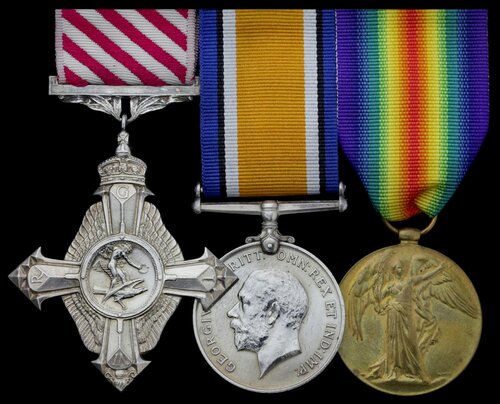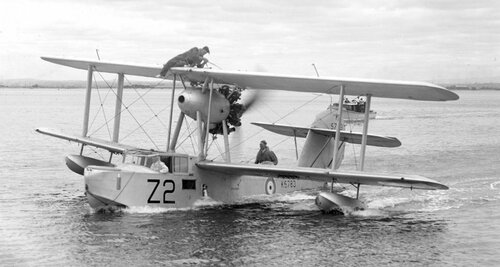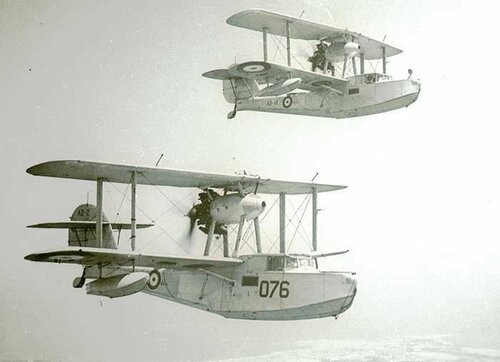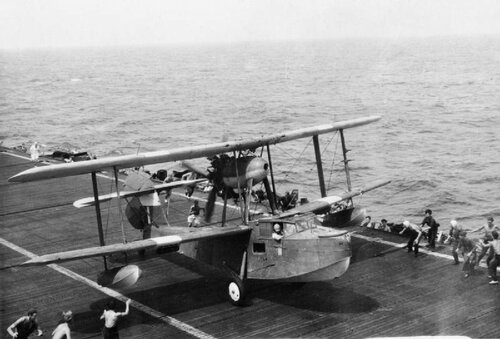Auction: 21001 - Orders, Decorations and Medals (conducted behind closed doors)
Lot: 417
A rare 1938 'experimental catapult flying' A.F.C. group of three awarded to Commander I. R. 'Izzy' Grant, Royal Navy and Royal Air Force, who won his award for two years of dangerous work as a Test Pilot in pioneering deck launches and sea landings
Air Force Cross, G.VI.R., undated; British War and Victory Medals (Mid. I. R. Grant. R.N.), good very fine (3)
A.F.C. London Gazette 1 January 1938. The recommendation states:
' This officer during the past 2 years has been engaged on experimental flying from catapults. He has frequently carried out aircraft launching tests under extremely hazardous conditions, and on at least two occasions his aircraft has hit the sea on launching. The slow landing speed achieved by this officer features prominently in the success of the recent trials of landing L/R and Walrus aircraft in rough waters. He has displayed outstanding skill and courage at all times.'
Ian Ross Grant - or 'Izzy' to his friends and comrades - was born at Cape Town, South Africa on 6 June 1899, the son of a Scots accountant and a South African mother. Living in London by 1911, he represented his College on the rugby field and entered the Royal Navy on 7 September 1917. Appointed a Midshipman aboard Centurion from 16 February 1918, he was advanced Sub-Lieutenant on 15 July 1919, was noted as a 'good Officer of the Watch' in 1920 and made Lieutenant, 15 July 1921. His Service Records reflect a generally positive outlook by his senior officers, including his skill as a hockey player and a golf handicap of 4, besides being a good rifle shot and a keen motor cyclist.
He clearly had a yearning to go to the skies and was thus attached to the Royal Air Force in June 1924, qualifying as a Pilot on 2 July 1925. It might be considered that he was lucky to gain his 'Wings', for he was cautioned for disobeying orders which caused the wreck of a Fairey Flycatcher whilst carrying out aerobatics at Kaletta when flying below the specified altitude on 28 June 1925.
Nonetheless Grant joined No. 403 Flight, moving onto No. 405, 408 & 444 in the coming years, being made Lieutenant-Commander on 15 June 1929, having been returned to Naval duty on 1 August 1928. He gained high praise for his work in testing the Walrus, 1936-37, as recalled by G. W. R. Nicholl in The Supermarine Walrus:
'One of the test pilots was Lieut.-Commander I. R. Grant when the ship, using the Scilly Isles as a base, used to conduct the rough weather operations off the Wolf Rock Lighthouse; wave-recording and cine films being used for subsequent analysis of the trials. The maximum average height of waves in which it was found the Walrus could be landed was twelve feet (the highest running up to fifteen feet).'
He also took part in a special flight:
G. R. Brown, capping that, flew nine up all told on a similar ferrying flight before the war from Lee to Ternhill (and doubtless some of the old Walrus hands like H. C. Clarke, Izzy Grant and Henry Wright, who were dug out for the trip, will remember the game of solo played on the camera hatch to while away the time). That overload, however, was prudently recorded in Brown's logbook in pencil subsequently, for squadron commanders took a less lenient view of such things in those days.'
He was placed on the Retired List at the rank of Commander on 6 June 1944, with it suggesting the further award of the O.B.E., although this has not been traced and appears to be in error. His final posting was at the Ministry of Aircraft Production later that year.
Having been married in London in 1931, together with his wife he returned to South Africa and died on 28 June 1965; sold together with copied research.
A good video of the Walrus in action can be see via:
https://www.youtube.com/watch?v=4-2UAXblTUE
Subject to 20% VAT on Buyer’s Premium. For more information please view Terms and Conditions for Buyers.
Sold for
£1,800
Starting price
£1600











